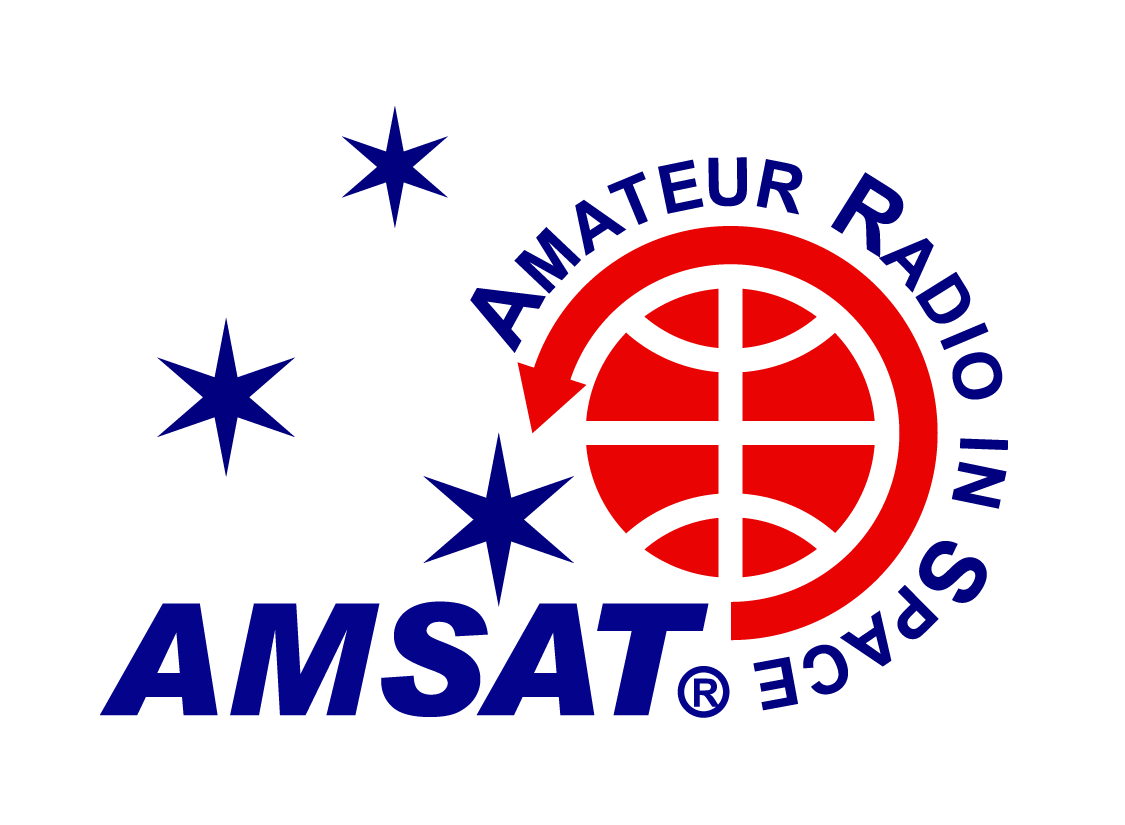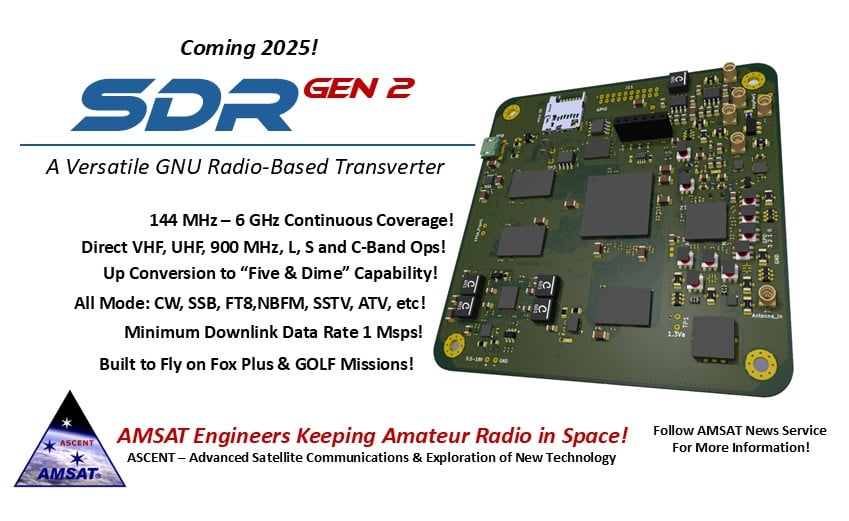In this edition:
* AMSAT Submits Formal Objection to AST SpaceMobile Plan, FCC Records 2,283 Comments
* Amateur Radio Enthusiasts Decode SSMIS After DoD Ends Public Hurricane Data Stream
* SpaceX Launches NASA’s TRACERS Mission to Study Solar Wind and Magnetic Reconnection
* NASA, ISRO Set to Launch NISAR Satellite to Map Earth and Monitor Glaciers, Faults, and Crops
* Changes to AMSAT-NA TLE Distribution for July 25, 2025
* ARISS News
* AMSAT Ambassador Activities
* Satellite Shorts From All Over
The AMSAT News Service bulletins are a free, weekly news and information service of AMSAT, the Radio Amateur Satellite Corporation. ANS publishes news related to Amateur Radio in Space including reports on the activities of a worldwide group of Amateur Radio operators who share an active interest in designing, building, launching and communicating through analog and digital Amateur Radio satellites.
The news feed on https://www.amsat.org publishes news of Amateur Radio in Space as soon as our volunteers can post it.
Please send any amateur satellite news or reports to: ans-editor [at] amsat.org
You can sign up for free e-mail delivery of the AMSAT News Service Bulletins via the ANS List; to join this list see: https://mailman.amsat.org/postorius/lists/ans.amsat.org/
ANS-208 AMSAT News Service Weekly Bulletins
To: All RADIO AMATEURS
From: Radio Amateur Satellite Corporation
712 H Street NE, Suite 1653
Washington, DC 20002
DATE 2025 Jul 27
AMSAT Submits Formal Objection to AST SpaceMobile Plan, FCC Records 2,220 Comments
The public comment period has officially closed for FCC Space Bureau Docket 25-201, which reviewed a request by AST & Science, LLC (AST SpaceMobile) to use the 430–440 MHz band for telemetry, tracking, and command (TT&C) operations. This spectrum includes 435–438 MHz, a critical allocation for the amateur satellite service. The filing window ended at midnight Eastern Time on July 21.
AMSAT submitted formal comments opposing the proposal, citing the extensive non-commercial use of 435–438 MHz by amateur satellites, including OSCAR-class spacecraft, educational CubeSats, and the ARISS station aboard the International Space Station. AMSAT also highlighted ongoing interference caused by AST’s BlueWalker-3 satellite on 437.500 MHz, which has disrupted InspireSAT-1. The filing urges the Commission to deny AST’s request and preserve the integrity of the amateur satellite service.
The international amateur satellite community also responded forcefully. AMSAT-DL (Germany) provided direct evidence of BlueWalker-3 interference received at the Bochum Observatory. AMSAT-SM (Sweden) filed in opposition as well, and the International Amateur Radio Union (IARU) pointed out that AST’s use of 430–440 MHz under ITU Radio Regulation Article 4.4 lacks required sharing studies and would pose significant interference risks to amateur operations worldwide.
As of the close of the comment period, the FCC docket recorded 2,283 total filings, a remarkable outpouring of concern from the amateur community. While not all filings were express comments in opposition, the overwhelming majority appear to be from individual amateur radio operators urging the FCC to reject AST’s request. The ARRL encouraged its members to participate. The result is one of the most heavily commented amateur-spectrum proceedings in recent FCC history.
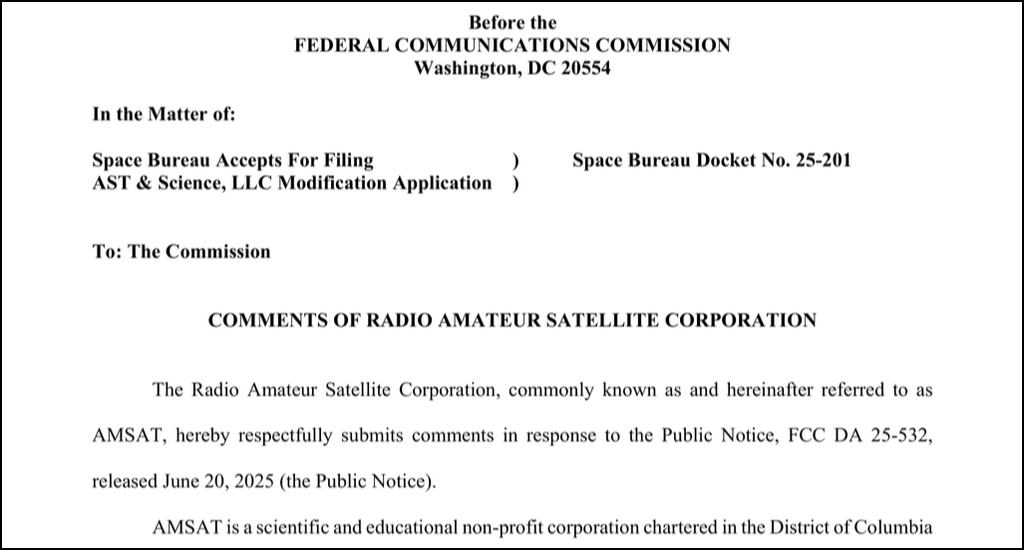
AST has maintained that its use of the band would be limited to early-orbit phases and emergencies, but commenters—including AMSAT—argue that such “limited use” does not mitigate the real potential for interference. AMSAT emphasized that many amateur satellites rely on IARU-coordinated use of 435–438 MHz, and that commercial systems should operate in bands explicitly allocated for space operations—not shared amateur satellite spectrum.
The FCC’s reply comment window remains open through August 5, 2025. During this period, individuals and organizations may respond directly to previously filed comments, clarify technical concerns, and reinforce the case for preserving amateur access to 435–438 MHz. AMSAT encourages reply commenters to cite interference data, highlight educational and non-commercial uses, and support the formal filings made by AMSAT and IARU.
After the reply deadline, the FCC Space Bureau will review the entire docket record. This process may take weeks or months and may culminate in a proposed order or public notice. While there is no petition-to-deny window in this particular docket, stakeholders may still file additional comments or seek reconsideration if the Commission issues a preliminary decision.
AMSAT will continue to monitor the proceeding and work in coordination with the IARU and international partners to protect amateur satellite spectrum. The 435–438 MHz allocation remains a cornerstone of AMSAT’s mission to promote education, experimentation, and global collaboration in space communications. AMSAT thanks all who filed comments and urges continued engagement as the proceeding advances.
[ANS thanks AMSAT and the FCC Electronic Comment Filing System (ECFS) for the above information]
Amateur Radio Enthusiasts Decode SSMIS After DoD Ends Public Hurricane Data Stream
Amateur radio enthusiasts have developed a method to access critical hurricane monitoring data following a decision by the U.S. government to end online distribution. The data originates from the Special Sensor Microwave Imager Sounder (SSMIS) aboard the Defense Meteorological Satellite Program (DMSP), long used by meteorologists to monitor storm development.
In June, the Department of Defense announced it would discontinue public access to real-time SSMIS data, citing cybersecurity concerns. Although the cutoff was postponed until August, forecasters warned that losing this source of microwave imagery would hinder their ability to analyze tropical cyclone structure, particularly under cloud cover or at night.
In response, amateur radio enthusiasts developed a workaround led by the SatDump project’s creator. The SatDump software project has released a new decoder that allows users to receive SSMIS transmissions directly from the satellite. Although official distribution is scheduled to stop soon, the satellite continues to broadcast unencrypted signals over the United States and polar regions.
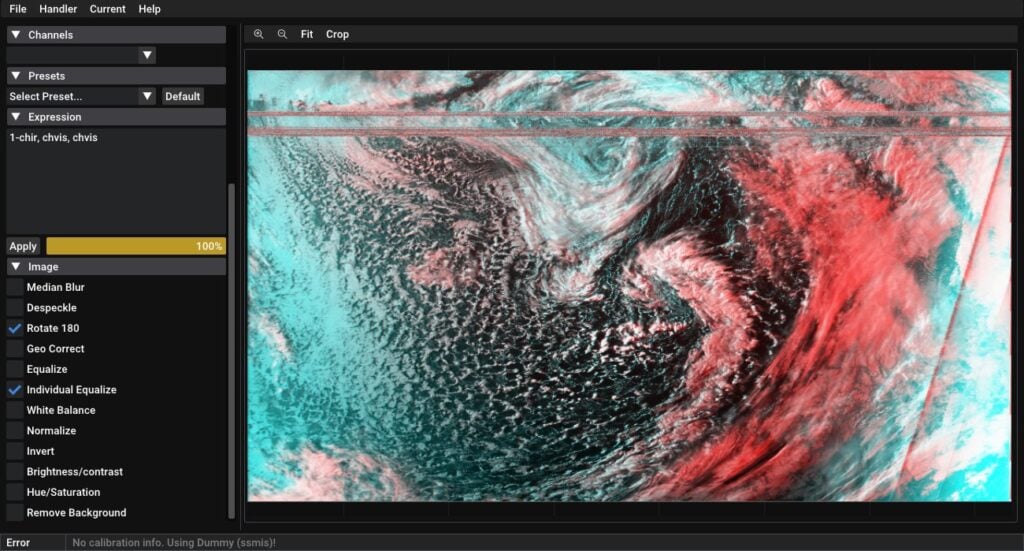
Not all data channels are accessible using this method. Thermal data in particular remains unavailable due to the absence of reference materials needed for decoding. Still, the tool provides valuable insight for those monitoring storms during hurricane season.
The decoder is still under active development and is available in the “verywip” branch of the SatDump GitHub repository at https://github.com/SatDump/SatDump. Interested users can download the tool and find setup instructions and ongoing updates through the project page.
Read the full article at: https://www.theregister.com/2025/07/21/ssmis_satellite_decoder/
[ANS thanks Lindsay Clark, The Register, for the above information]
The 2025 AMSAT President’s Club Coins Have Just Arrived!
Celebrating the 40th Anniversary of Amateur Radio on Human Spaceflight
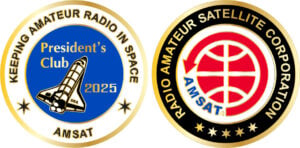
Help Support GOLF and Fox Plus.
Join the AMSAT President’s Club today!
SpaceX Launches NASA’s TRACERS Mission to Study Solar Wind and Magnetic Reconnection
NASA’s TRACERS mission successfully launched from Vandenberg Space Force Base in California on Wednesday, July 23, following a one-day delay caused by airspace concerns. The mission, carried into orbit aboard a SpaceX Falcon 9 rocket, aims to improve scientific understanding of space weather by studying how solar wind affects Earth’s magnetic field.
TRACERS, short for Tandem Reconnection and Cusp Electrodynamics Reconnaissance Satellites, consists of two identical spacecraft designed to fly in close formation. Their mission is to monitor magnetic reconnection events, where Earth’s magnetic field lines snap and reconnect due to surges in solar wind. These reconnection events are responsible for geomagnetic storms and auroras, and can potentially disrupt satellites and electrical grids on Earth.
The Falcon 9 rocket lifted off at 2:13 p.m. EDT (1813 UTC) and successfully returned its first stage to a landing at Vandenberg less than eight minutes after launch. This marked the 16th flight for the booster. The rocket’s upper stage continued carrying TRACERS to its target altitude of 367 miles (590 kilometers) in low Earth orbit.
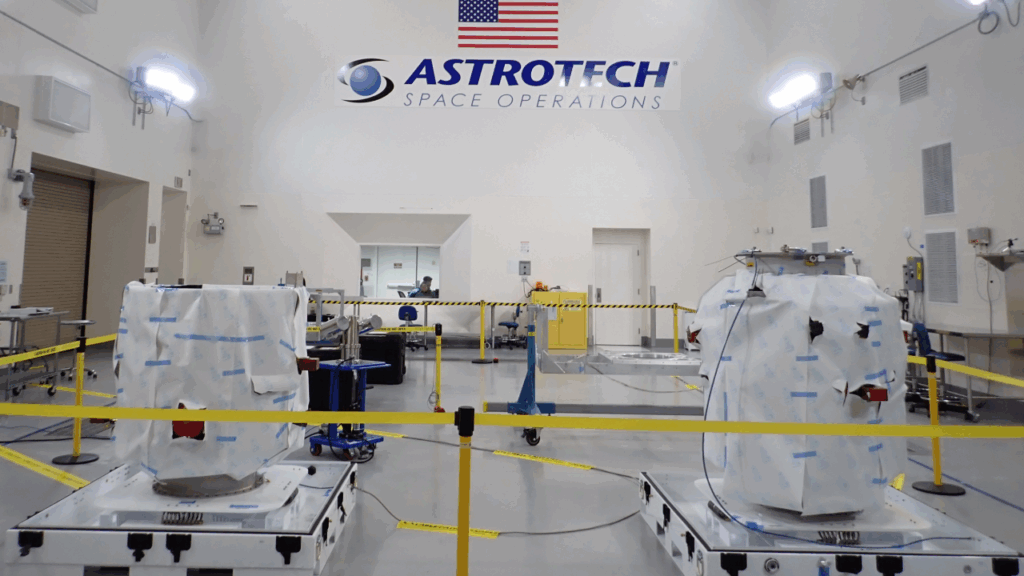
Among the ride-along NASA missions was Athena EPIC, a SmallSat aimed at improving cost-effective integration of Earth-observing instruments into orbit. Also included was the Polylingual Experimental Terminal, which will test spacecraft communication across different satellite networks, and the REAL mission, a cubesat designed to study and eventually mitigate harmful high-energy particles in the Van Allen radiation belts.
All six payloads — TRACERS and its fellow spacecraft — were successfully deployed during a 50-minute window beginning roughly 55 minutes after launch. The TRACERS mission is managed in collaboration with the University of Iowa, with the goal of enhancing models of space weather and protecting infrastructure from solar activity.
Read the full article at: https://www.space.com/science/nasa-launching-tracers-mission-to-protect-earth-from-space-weather-today-how-to-watch-live
[ANS thanks Keith Cooper, Space.com, for the above information]
NASA, ISRO Set to Launch NISAR Satellite to Map Earth and Monitor Glaciers, Faults, and Crops
A new Earth-observing satellite developed jointly by NASA and the Indian Space Research Organisation (ISRO) is set to enhance global monitoring of land and ice. The NASA-ISRO Synthetic Aperture Radar mission, known as NISAR, will track surface changes with unprecedented accuracy, helping scientists and decision-makers address challenges ranging from natural disasters to food security. The satellite is scheduled to launch on July 30, 2025, at 8:10 a.m. EDT (12:10 UTC) from India’s Satish Dhawan Space Centre aboard ISRO’s GSLV-F16 launch vehicle.
NISAR is the first collaborative satellite mission of its kind between the two space agencies. It combines NASA’s L-band radar with ISRO’s S-band radar to produce high-resolution measurements of Earth’s surface, regardless of weather or lighting conditions. This dual-radar approach will allow scientists to detect subtle shifts in glaciers, faults, wetlands, and farmland, and to develop a deeper understanding of how these systems evolve over time.
The satellite’s radar reflector antenna spans 39 feet and will scan Earth’s surface every 12 days. The system is capable of detecting ground movement as small as fractions of an inch, providing critical insight into potential earthquakes, landslides, and volcanic activity. NISAR will also monitor infrastructure like dams and levees, alerting engineers to changes in surrounding land that may affect structural stability.
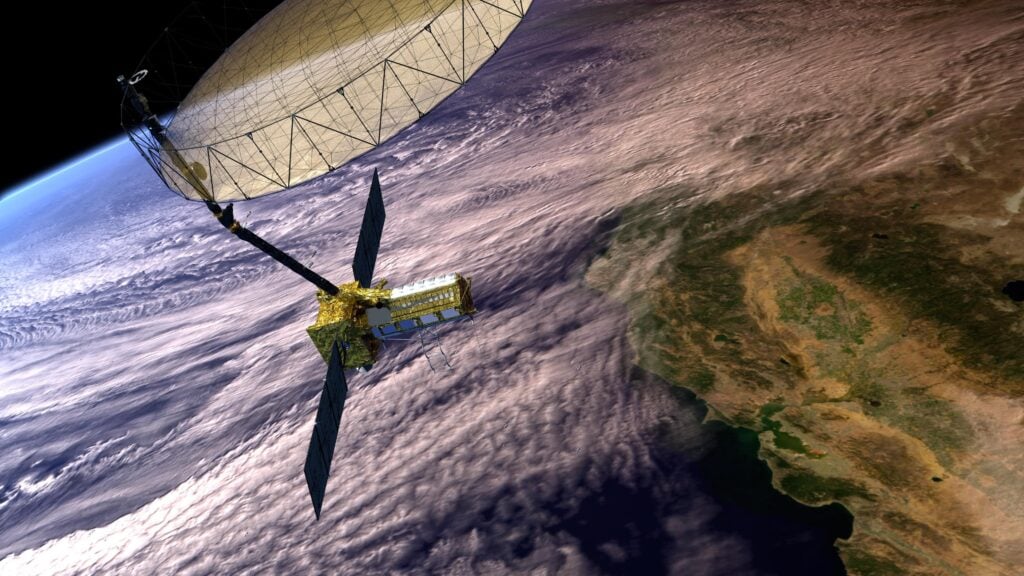
The mission also plays a vital role in monitoring ecosystems and agricultural resources. With its ability to penetrate forest canopies and monitor moisture levels in soil and vegetation, NISAR will contribute to studies of forest health, crop yields, and carbon cycling. Its global coverage will be especially valuable in regions that lack consistent satellite monitoring.
The NISAR project is managed jointly by NASA’s Jet Propulsion Laboratory and multiple ISRO centers, with key hardware contributions from both nations. Engineers from California and India collaborated to integrate and test the satellite, which represents a new chapter in U.S.-India civil space cooperation. NISAR continues the legacy of synthetic aperture radar missions while expanding their reach and resolution on a global scale.
Read the full article at: https://www.jpl.nasa.gov/news/5-things-to-know-about-powerful-new-us-india-satellite-nisar/
[ANS thanks the NASA Jet Propulsion Laboratory, for the above information]
Changes to AMSAT-NA TLE Distribution for July 25, 2025
Two Line Elements or TLEs, often referred to as Keplerian elements or keps in the amateur community, are the inputs to the SGP4 standard mathematical model of spacecraft orbits used by most amateur tracking programs. Weekly updates are completely adequate for most amateur satellites. TLE bulletin files are updated daily in the first hour of the UTC day. New bulletin files will be posted immediately after reliable elements become available for new amateur satellites. More information may be found at https://www.amsat.org/keplerian-elements-resources/.
NOTICE: In an effort to minimize confusion between sources of two line element sets, AMSAT is adopting the convention of listing the USSF/NORAD Satellite Catalog name first, followed by any secondary name or names in parentheses. For example, “POEM 4 (BGS ARPIT)” was added recently where “POEM 4” is the name that appears in the US Space Force Satellite Catalog, and “BGS ARPIT” is the name best known within the amateur satellite community. Expect name changes for affected satellites in the coming weeks as this change is fully implemented.
This week there are no additions or deletions to the AMSAT TLE distribution.
[ANS thanks AMSAT Orbital Elements page for the above information]
ARISS NEWS
Amateurs and others around the world may listen in on contacts between amateurs operating in schools and allowing students to interact with astronauts and cosmonauts aboard the International Space Station. The downlink frequency on which to listen is 145.800 MHz worldwide.
+ Upcoming Contacts
Youth Camp “Cosmos” of Elabuga district, Republic of Tatarstan, Russia, direct via TBD
The ISS callsign is presently scheduled to be RSØISS
The scheduled crewmember is TBD
The ARISS mentor is RV3DR
Contact is go for Mon 2025-07-28 TBD UTC
Osaka-Kansai Japan Expo, Osaka, Japan, direct via 8K3EXPO
The ISS callsign is presently scheduled to be OR4ISS
The scheduled crewmember is Takaya Onishi KF5LKS
The ARISS mentor is 7M3TJZ
Contact is go for: Fri 2025-08-01 09:45:06 UTC
Many times a school may make a last minute decision to do a Livestream or run into a last minute glitch requiring a change of the URL but we at ARISS may not get the URL in time for publication. You can always check https://live.ariss.org/ to see if a school is Livestreaming.
The crossband repeater continues to be active (145.990 MHz up {PL 67} & 437.800 MHz down). If any crewmember is so inclined, all they have to do is pick up the microphone, raise the volume up, and talk on the crossband repeater. So give a listen, you just never know.
The packet system is also active (145.825 MHz up & down).
As always, if there is an EVA, a docking, or an undocking; the ARISS radios are turned off as part of the safety protocol.
Note, all times are approximate. It is recommended that you do your own orbital prediction or start listening about 10 minutes before the listed time.
The latest information on the operation mode can be found at https://www.ariss.org/current-status-of-iss-stations.html
The latest list of frequencies in use can be found at https://www.ariss.org/contact-the-iss.html
[ANS thanks Charlie Sufana, AJ9N, one of the ARISS operation team mentors for the above information]
AMSAT Ambassador Activities
AMSAT Ambassadors provide presentations, demonstrate communicating through amateur satellites, and host information tables at club meetings, hamfests, conventions, maker faires, and other events.
AMSAT Ambassador Clint Bradford, K6LCS, says,
“Think a 75-minute presentation on “working the easy satellites” would be appropriate for your club or event? Let me know by emailing me at k6lcsclint (at) gmail (dot) com or calling me at 909-999-SATS (7287)!”
Clint has NEVER given the exact same show twice: EACH of the 150+ presentations so far has been customized/tailored to their audiences.
Scheduled Events
Northeast HamXposition (HamX) & New England ARRL Convention – August 21st thru 24th, 2025
Best Western Royal Plaza & Trade Center
181 Boston Post Road West
Marlborough, MA 01752
http://www.HamX.org
W1EME, WD4ASW, WB1FJ
Greater Louisville Hamfest – September 6th, 2025
Paroquet Springs Conference Centre
395 Paroquet Springs Drive
Shepherdsville, KY 40165
https://louisvillehamfest.wixsite.com/louisvillehamfest
W4FCL
43rd Annual AMSAT Space Symposium & Annual General Meeting – October 16th thru 19th, 2025
Holiday Inn & Suites Phoenix Airport North
1515 North 44th Street
Phoenix, Arizona 85008
https://www.amsat.org/2025-symposium/
Interested in becoming an AMSAT Ambassador? AMSAT Ambassadors provide presentations, demonstrate communicating through amateur satellites, and host information tables at club meetings, hamfests, conventions, maker faires, and other events.
For more information go to: https://www.amsat.org/ambassador/
[ANS thanks Bo Lowrey, W4FCL, Director – AMSAT Ambassador Program, for the above information]
AMSAT Remove Before Flight Key Tags Now Available
Yes, These are the Real Thing!
Your $20 Donation Goes to Help Fly a Fox-Plus Satellite
Includes First Class Postage (Sorry – U.S. Addresses Only)
Order Today at https://www.amsat.org/product/amsat-remove-before-flight-keychain
Satellite Shorts From All Over
+ ARISS SSTV Series 28 ran from July 14–20, 2025, transmitting 12 commemorative images from the International Space Station to honor the Apollo-Soyuz Test Project and STS-51F, which helped pioneer SSTV from space. The event drew strong global interest, with more than 8,650 images submitted to the ARISS gallery—an increase from Series 27. Over 3,300 individuals uploaded decodes, and nearly half of all participants were educators or students, highlighting SSTV’s appeal in STEM education. Europe led with 42% of submissions, followed by Asia (23%), North America (12%), South America (8%), Oceania (4%), Africa (1.3%), and Antarctica (0.01%). All seven continents were represented, demonstrating SSTV’s remarkable accessibility with modest equipment. ARISS thanks everyone who participated and helped make Series 28 a resounding worldwide success. (ANS thanks ARISS for the above information)
+ On July 22, 2025, Earth completed its rotation 1.34 milliseconds faster than the standard 24-hour day, making it the second-shortest day on record since precise atomic clock measurements began in 1973. This continues a puzzling trend observed since 2020, during which Earth has repeatedly broken its own speed records — the shortest day to date was July 5, 2024, at 1.66 milliseconds short. While day length variations are not new over geologic time, the recent acceleration defies easy explanation and may point to changes deep within the planet. One leading theory attributes the shift to interactions in Earth’s liquid core, which could be redistributing angular momentum and subtly speeding up the mantle and crust. Other scientists suggest melting polar ice and rising sea levels may be influencing Earth’s rotation, though likely as a moderating factor rather than the main cause. Experts believe the acceleration may be temporary, and Earth’s long-term trend toward slower rotation and longer days could soon resume. (ANS thanks Space.com for the above information)
+ The long-anticipated reinstallation of HamTV is scheduled to take place on the ISS on Tuesday, July 29. Work on the system will occur between 3:55 AM EDT and 5:55 AM EDT (07:55 UTC to 09:55 UTC), and successful completion could lead to test transmissions beginning the same day. HamTV is a digital amateur television system developed for educational outreach, allowing students to see live video from space during school contacts with the ISS. The system transmits MPEG-2 video using the DVB-S protocol, with a downlink frequency of 2395 MHz (2.395 GHz), and relies on modest ground station equipment for reception. Originally launched in 2014, HamTV is housed in the Columbus module but has been offline since 2018 pending equipment refurbishment and crew time for reinstallation. More information is available on the BATC Wiki at wiki.batc.org.uk/HAMTV_from_the_ISS and in the ARISS discussion channel on Discord at discord.gg/JrmXw58U8T. (ANS thanks ARISS for the above information)
+ KrakenRF Inc has announced the upcoming launch of the Discovery Drive, an affordable automatic antenna rotator designed for the Discovery Dish and similar antennas like Wi-Fi grid and Yagi types. A pre-launch page is now live at crowdsupply.com/krakenrf/discovery-drive, where users can sign up to receive notifications and secure early-bird pricing with at least $100 off during the crowdfunding campaign. The motorized rotator enables tracking of fast-moving polar orbiting satellites such as NOAA POES, METEOR-M2, METOP, and FENGYUN, and allows quick switching between geostationary satellites. It also supports amateur radio satellite tracking using rotctl-compatible software like SatDump, GPredict, and Look4Sat. Discovery Drive features a built-in ESP32 controller with Wi-Fi and USB connectivity, ±1.5° accuracy, and a waterproof enclosure—no external controller required. With open-source firmware, low power consumption, and robust gear-locked output drives, it offers an accessible and user-friendly solution for satellite and directional antenna users. (ANS thanks KrakenRF for the above information)
Join AMSAT today at https://launch.amsat.org/
In addition to regular membership, AMSAT offers membership to:
* Societies (a recognized group, clubs or organization).
* Primary and secondary school students are eligible for membership at one-half the standard yearly rate.
* Post-secondary school students enrolled in at least half-time status shall be eligible for the student rate for a maximum of 6 post-secondary years in this status.
* Memberships are available for annual and lifetime terms.
Contact info [at] amsat.org for additional membership information.
73 and remember to help Keep Amateur Radio in Space!
This week’s ANS Editor, Mitch Ahrenstorff, ADØHJ
mahrenstorff [at] amsat.org
